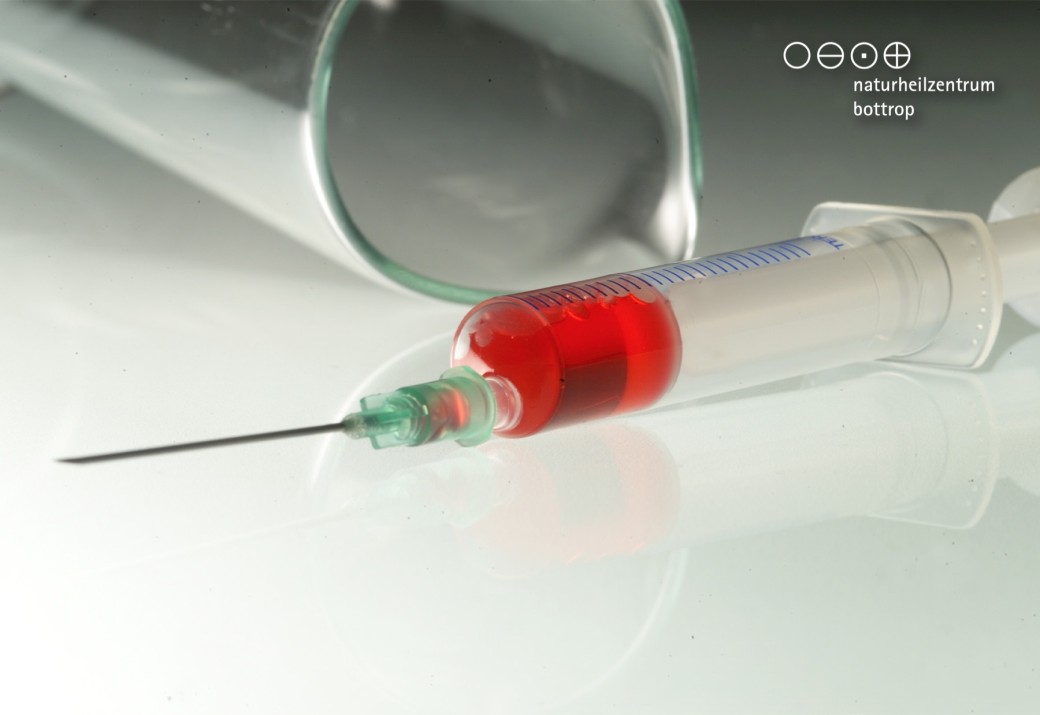Snakemed – a therapy with a long tradition

Bottrop - Düsseldorf: Use of snake venom in modern therapy
The Snakemed treatment is the result of more than 35 years of practical experience and intensive work in Bottrop, Mühlheim an der Ruhr and Düsseldorf. It is based on the results that have been gathered during this time. Another important part of the development of snake venom therapy was the ongoing exchange between colleagues in complementary medicine. This was particularly important with our colleague and alternative practitioner Norbert Zimmermann (ret.), who practiced in Düsseldorf until 2021. Naturheilzentrum bottrop has enjoyed a friendly relationship with him for many years.
The individualized combination of injections and acupuncture with homeopathically prepared poisons from snakes, spiders, frogs, scorpions and bees or use in the form of creams, ointments and globules is a valuable and tried-and-tested natural remedy.
Highly diluted, treatment with injections is used specifically for both specific and non-specific inflammatory conditions. Even if the effectiveness of many natural healing methods such as snake venom (snake medicine treatment) has not been proven by scientific studies, current medical research and a look back at medical history show that snake venom works!

More than just a symbol in medicine: the snake and the staff of Asclepius – from poison to medicine
In medicine, the snake is never far away: since time immemorial, the so-called Rod of Asclepius, with a snake coiled around it, has been the symbol of many healing professions. It became the symbol of doctors and pharmacists because the Greek god of healing Asclepius (Latin: Aesculapius) usually leaned on his staff, which was entwined with a snake. Aesculapius is also the namesake of a strictly protected snake, which can grow up to two meters long and only occurs in three places in Germany, for example: in Hirschhorn in Hesse, in Schlangenbad (which owes its name to the snakes) and on the slopes of the Danube near Passau, where several hundred specimens live. However, while the Aesculapian snake is non-poisonous, its poisonous relatives have traditionally been of great importance in medicine all over the world.

Snakemed: the areas of application with toxins from snakes, vipers and otters are diverse – highly diluted snake venom conquers homeopathy
Constantin Hering, a doctor born in Saxony, is now regarded as the man who made snake venom usable for modern naturopathy in the early 19th century. As a student, he was supposed to write a treatise on the “aberration” of homeopathy, but after two years of intensive study of the subject matter, Hering became an enthusiastic advocate of homeopathy. In Surinam, where Hering worked as the governor’s Personal physician, he collected the venom of the South American bushmaster viper (Lachesis muta), which is still considered one of the most important snake venoms in alternative medicine today. Hering later emigrated to the USA and founded the “North American Academy of the Homoeopathic Healing Art” in Allentown (Pennsylvania) in 1835 together with the doctor Wilhelm Wesselhöft, also from Germany, as the first state-recognized training facility for homeopathic doctors in the USA. Even today, Hering’s work, especially his book on the “effect of snake venoms” (1837) is still an important source for the medical use of certain snake venoms.

Snake Medicine also for children – the use in modern naturopathy Today: Ancient knowledge about the healing powers of animal toxins & Co
Ayurveda is the name of the traditional healing method in India, the roots of which date back to before our era. In India, there is the saying “poison kills poison“. Poisons from snakes, scorpions and bees have been used to cure diseases in the Ayurvedic healing system since ancient times. One of the eight disciplines of Ayurveda is based on the book of Agada Tantra and deals with toxicology, the study of poisoning. It was already taught in ancient India at one of the oldest universities in the world in Takshashila (Punjab).
Injection with a gentle healing effect: injection with cobra venom – from the teachings of Ayurveda
Hindu scholars in particular gained early experience with the use of snake venom for healing purposes. They knew that snake venom is a very strong stimulant when administered orally in a very small dose and produced important medicines such as Suchikabharana (against plague, coma, fever, tuberculosis) or Ardhanarisvara (for persistent fever) from the venom of snakes. The Unani teachings in India, Pakistan and Afghanistan, which are based on ancient Greek medicine, also knew and still know the use of cobra venom as a tonic, aphrodisiac, liver stimulant and for resuscitation in cases of collapse. Today, Ayurveda is considered traditional alternative medicine in India and is taught at universities. The knowledge of the healing powers of animal poisons has therefore also been confirmed in many modern studies, including effectiveness in arthritis.

Snake venom treatment: empirical medicine and conventional medicine rely on therapy with animal venoms
Although snake venoms have been used successfully in traditional Indian and Chinese medicine, only 0.01 percent of their pharmacologically active ingredients have been identified to date. Nevertheless, there are numerous approved drugs based on snake venom. The ACE inhibitor enalapril, for example, which is used to treat arterial hypertension (high blood pressure) and heart failure, is based on peptides from the venom of the Brazilian jararaca viper (Bothrops jararaca). The anticoagulant eptifibatide is derived from a protein found in the venom of the North American dwarf rattlesnake. Another anticoagulant, tirofiban, was modeled on a component of the venom of the Asian sand rattlesnake. Many other components of snake venoms are also being investigated in preclinical or clinical studies for a variety of therapeutic applications. They will continue to be an important library for drug research in the future, and conventional medicine also uses other animal venoms: For example, conotoxins are extracted from the venom of cone snails living in the sea, which can block pain receptors and inhibit inflammation. Studies have found therapeutic benefits for cancer and rheumatoid arthritis. In Korea, bee venom has also long been used to relieve pain symptoms and treat inflammatory diseases such as rheumatoid arthritis. A Korean review study from 2025 shows that it can also be used for a variety of immunological and neurodegenerative diseases, including autoimmune diseases and Parkinson’s disease.

Desensitization from highly potent solutions: Stimulus for self-healing – potential and healing power of animal poisons and co
The Snakemed treatment: Combination therapy of acupuncture and injections with animal venoms – toads, snakes, scorpions, spiders and bees in naturopathic practice
At the Bottrop Center for Naturopathic Medicine, snake venoms are a natural focus of treatment for good reason. Experience at the institute of alternative medicine practitioners Christian Rüger and Farid Zitoun has shown that Snakemed is a supportive enrichment in the fight against chronic illnesses. The pharmaceutical industry extracts over 40 essences from the venom of various vipers and adders, which are used to treat a wide range of illnesses: For chronic diseases such as rheumatism, asthma, neuralgia (chronic pain), migraine or Crohn’s disease as well as allergies (such as: hay fever) and various degenerative diseases of the eye, patients often report relief or even improvements in their symptoms or complaints. Patients have benefited from snake venom therapy, not least through the work of our Düsseldorf colleague Norbert Zimmermann (retired alternative practitioner). This is always preceded by a detailed initial consultation with an assessment (basic examination) as the basis for drawing up a profound and individualized treatment plan with initial treatment. In addition, the intervals at which tiny doses of the essences are injected or, in the case of small patients, administered in a child-friendly form are discussed in detail.






